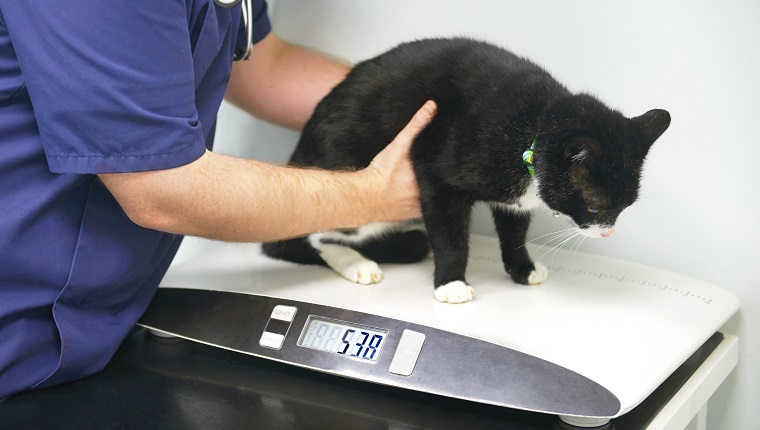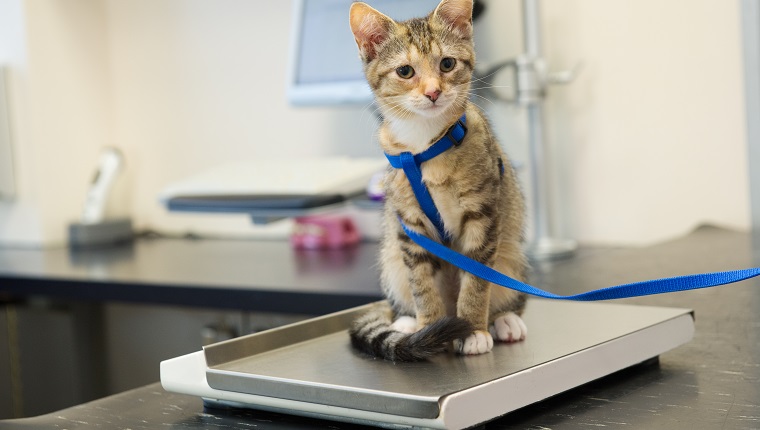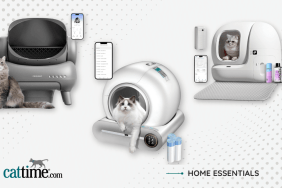Feeding your cat the correct amount of food and making sure they stay at an appropriate weight are crucial parts of keeping them healthy. Vets often cite feline obesity as a key issue to watch out for, but a cat who’s underweight can also be a cause for concern.
If you suspect your cat may be losing weight too fast or that they’re underweight, then you must consult your veterinarian. Remember, if your vet confirms that you’re caring for an underweight cat, it’s important to take their treatment advice seriously.
Here’s what you need to know about finding out if your cat is underweight.
Tests To Tell If Your Cat Is Underweight
First of all, you don’t need to try and hold your cat on a weighing scale to check if they’re underweight or not.
Instead, try to rub your hand along your cat’s sides and notice how pronounced the ribs are. If it seems like you can feel a lot of the ribs and they’re very pronounced, your cat could be underweight.
A similar test is to run your hand along your cat’s spine and feel how pronounced the vertebrae are.
If you can visibly see a short-haired cat’s ribs and backbone, that’s also a possible sign of an underweight kitty. Although, it’s important to note that certain breeds of cat are naturally skinnier or larger than others.
These at-home tests are just to give you an idea of what to look for. They’re a first step before you follow up with your vet so they can perform an exam and run tests. Only a professional can find out for sure what’s medically wrong with your cat.
Steps To Take If Your Cat Is Underweight

If you suspect that your cat is underweight, there are a couple of responsible steps you can take.
First, monitor your cat’s feeding times and see if they’re finishing all of their food. A cat who loses their appetite or doesn’t eat their food could suffer from a number of issues that require veterinary treatment.
Next, if your feline scarfs their food down as normal, check that you’re feeding them the correct amount of food. Most cat food packaging or websites will have a chart with recommended serving amounts based on your cat’s weight, but your vet is the best source to find the right food and serving sizes.
Be aware that overfeeding can bring about a case of feline obesity, especially so with indoor cats.
If you think your cat’s diet is okay but they’re still underweight, it’s time to call or visit your vet. Follow any steps or feeding advice your vet gives you to the letter.
Have you ever found out that your cat was underweight? What steps did you take to get them back to a healthy weight? Tell us your tips in the comments section below!









